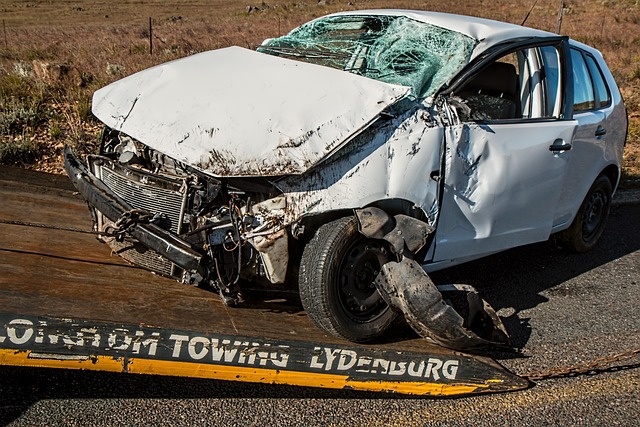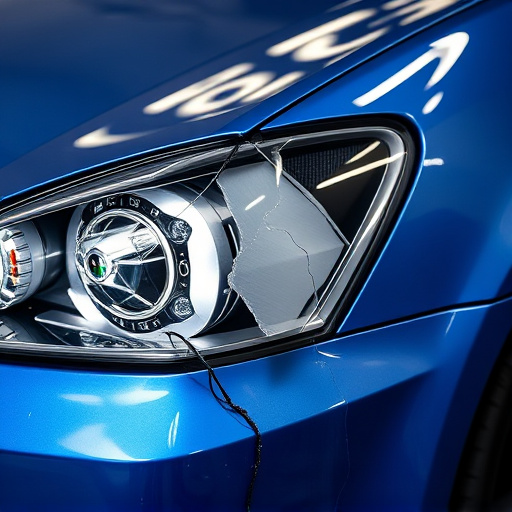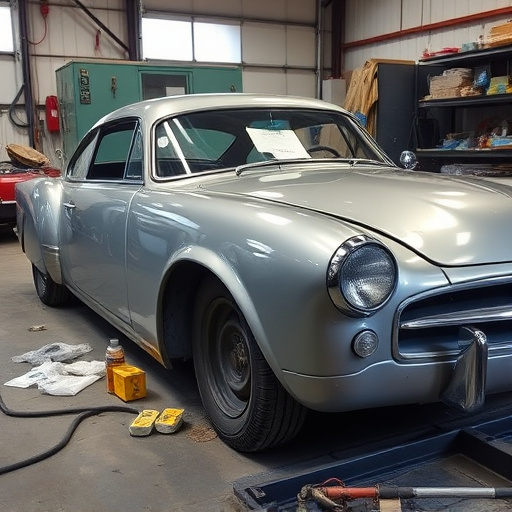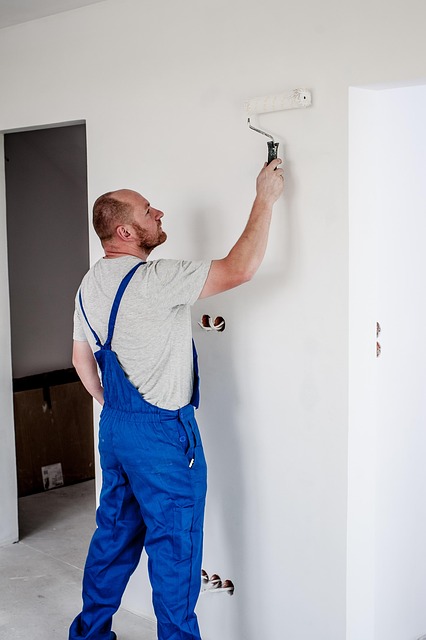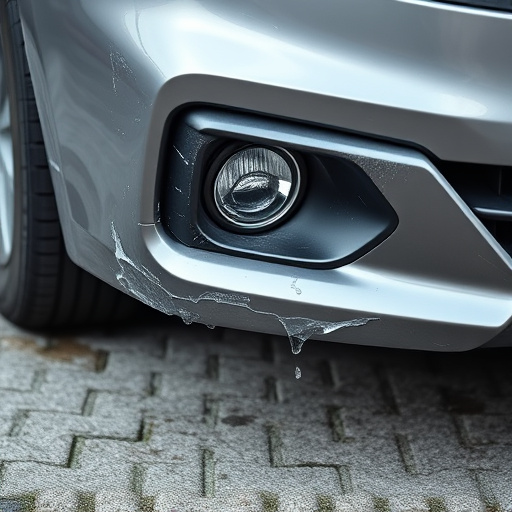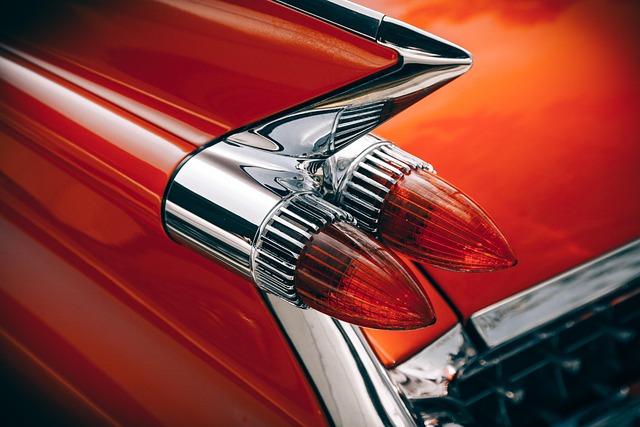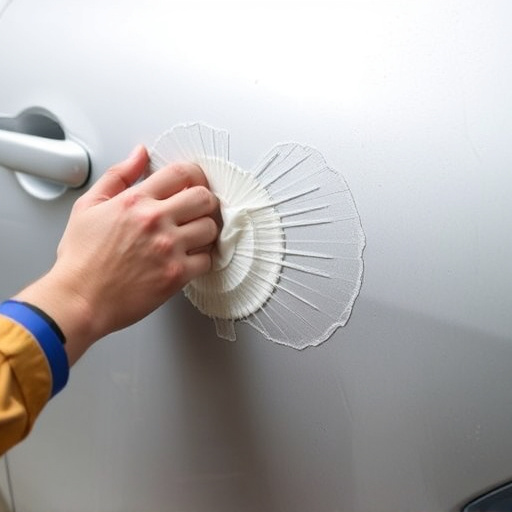Full panel replacement is a comprehensive exterior body overhaul crucial for severe vehicle damage or crashes. This process involves removing and replacing all damaged panels with model-specific OEM parts, ensuring structural integrity, enhanced safety, and aesthetic restoration. Conducted by trained professionals in specialized body shops, it offers superior craftsmanship, precise alignment, and a factory-fresh finish. Unlike traditional repairs, full panel replacement minimizes future structural issues, enhances corrosion resistance, and preserves vehicle value, making it an indispensable practice for superior driver and passenger protection and increased resale appeal.
In today’s world, understanding full panel replacement is paramount for enhancing vehicle safety. This comprehensive guide explores the profound structural benefits of this crash repair method. From a detailed breakdown of the process to its significant impact on structural integrity and long-term advantages, we delve into why full panel replacement is not just a repair, but a game-changer in vehicle safety. Discover how it goes beyond crash protection, ensuring optimal performance and peace of mind for drivers.
- Understanding Full Panel Replacement: A Comprehensive Overview
- The Structural Impact: How Full Panel Replacement Enhances Safety
- Long-Term Advantages: Beyond Crash Protection in Vehicles
Understanding Full Panel Replacement: A Comprehensive Overview
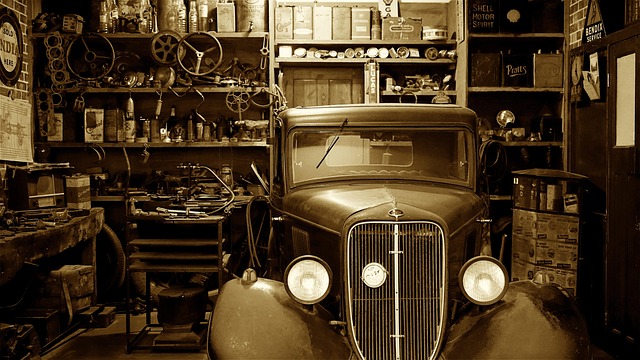
Full panel replacement is a comprehensive process that involves the complete exchange of a vehicle’s exterior body panels after a crash or significant damage. This method goes beyond simple auto frame repair; it aims to restore the vehicle’s structural integrity, aesthetic appeal, and safety features. When a car suffers substantial impact, its body panels can bend, deform, or even break, compromising the overall stability and appearance of the vehicle.
In such cases, full panel replacement becomes an indispensable solution. It entails carefully removing the damaged panels and replacing them with new ones that match the exact specifications of the make and model. This meticulous process is carried out by skilled professionals in a reputable vehicle body shop, ensuring precise alignment, superior craftsmanship, and a seamless fit. Unlike partial repairs, full panel replacement guarantees optimal performance, enhanced safety, and a factory-like finish, making it a preferred choice for those prioritizing both functionality and aesthetics in their auto body repair journey.
The Structural Impact: How Full Panel Replacement Enhances Safety

In the aftermath of a collision, full panel replacement stands as a beacon of structural integrity and enhanced safety. Unlike partial repairs or frame straightening techniques that merely adjust and realign components, full panel replacement involves the complete reconstruction of damaged sections using original equipment manufacturer (OEM) parts. This holistic approach ensures not just cosmetic restoration but also maintains the vehicle’s structural integrity. By replacing every panel, from the hood to the doors and trunk, auto dent repair experts eliminate weak spots that could compromise safety during future accidents.
The benefits extend beyond mere functionality. Full panel replacement is a crucial step in ensuring optimal car paint repair, restoring not just the exterior aesthetics but also addressing underlying issues that might have been overlooked in lesser repairs. This comprehensive strategy not only enhances the vehicle’s overall value but also guarantees superior protection for drivers and passengers, making it an indispensable practice in modern automotive maintenance and safety protocols.
Long-Term Advantages: Beyond Crash Protection in Vehicles

Full panel replacement offers more than just immediate crash protection; it’s a strategic investment in long-term vehicle value and safety. When a vehicle experiences a collision, the impact can cause hidden damage that may weaken structural integrity. Traditional repair methods often patch these issues, leaving potential vulnerabilities that could compromise the vehicle’s performance and safety during future accidents. Full panel replacement, however, involves swapping out the entire damaged section of the car body, including any affected structural components and panels. This comprehensive approach ensures that every aspect of the vehicle is restored to its original specifications, enhancing overall strength and stability.
Beyond enhancing safety, full panel replacement significantly contributes to vehicle longevity. By addressing all associated damage, this method minimizes the risk of future issues stemming from unresolved structural weaknesses. Moreover, it allows for the use of modern materials and manufacturing techniques that improve corrosion resistance and durability. As a result, vehicles that undergo full panel replacement often experience enhanced aesthetic appeal alongside their improved safety and performance, making them more attractive to potential buyers in the event of future sales.
Full panel replacement offers a multifaceted approach to automotive safety, transcending immediate crash protection. By employing this method, vehicles not only gain enhanced structural integrity but also contribute to long-term safety improvements through better performance in accidents. Embracing full panel replacement is thus a strategic step towards creating safer driving environments for all.

